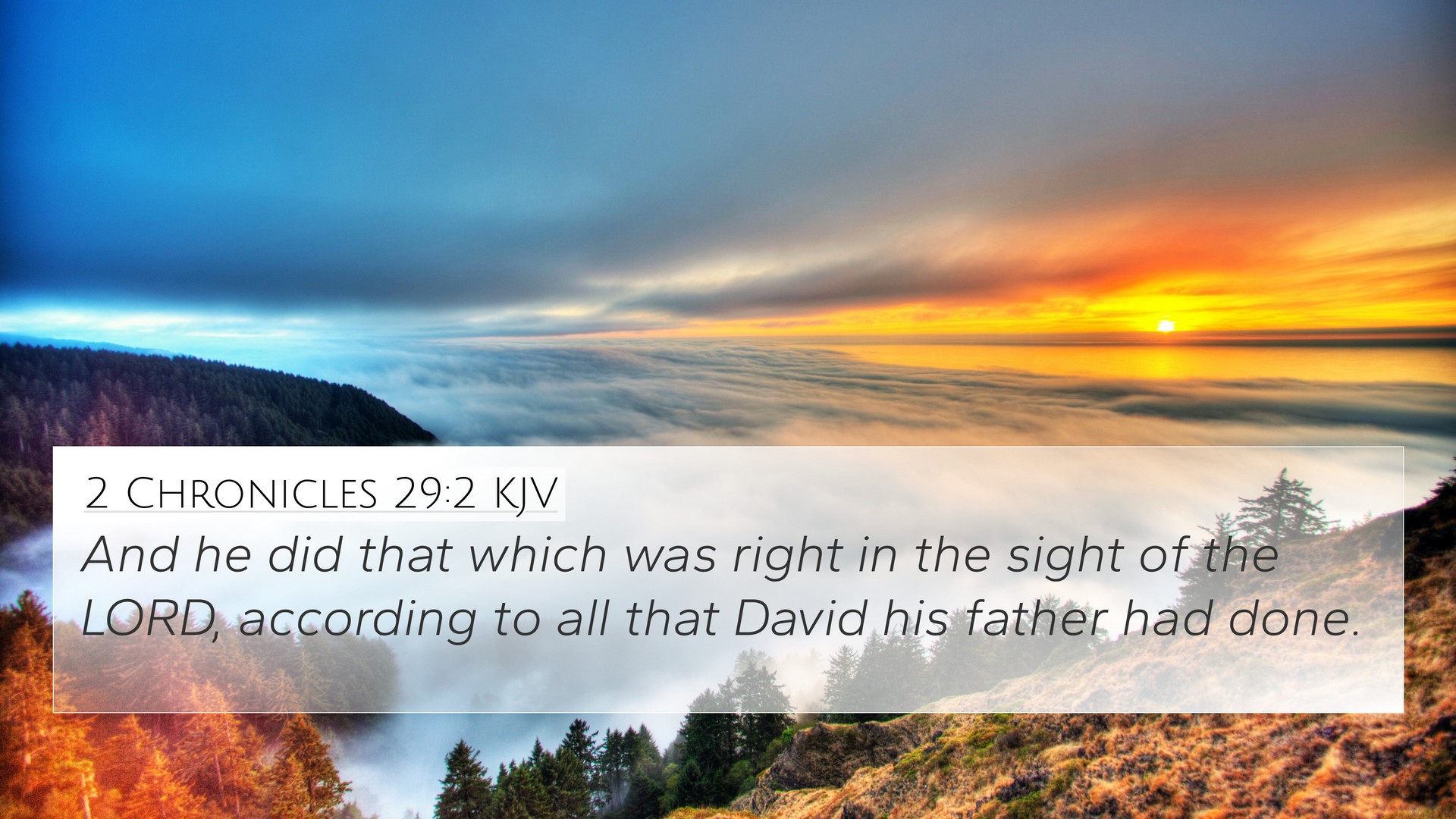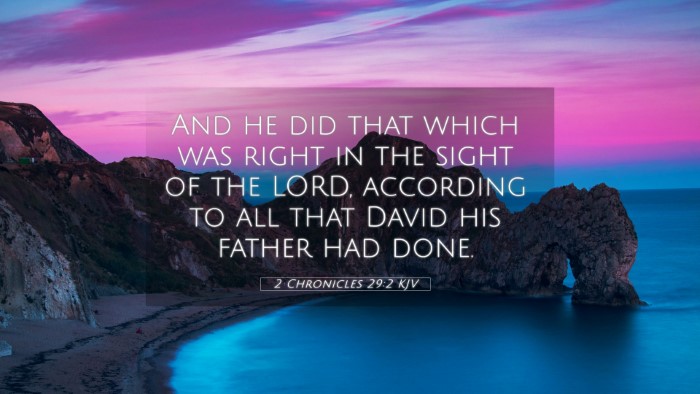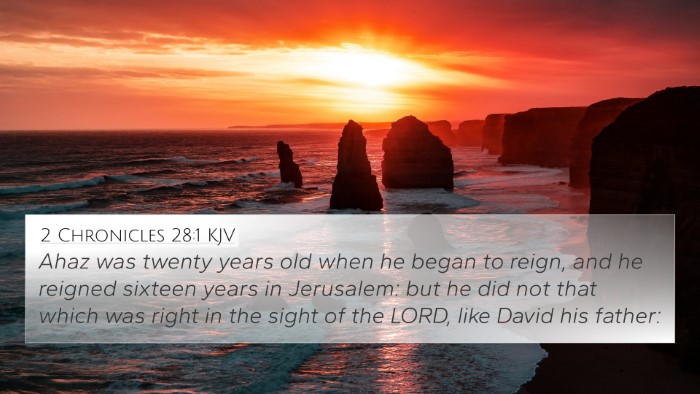Understanding 2 Chronicles 29:2
(“And he did that which was right in the sight of the LORD, according to all that David his father had done.”)
2 Chronicles 29:2 marks a significant moment in the reign of King Hezekiah, who is praised for his faithfulness to God and for following the righteous example set by his ancestor, King David. This verse serves as an introduction to Hezekiah's reforms and initiatives aimed at restoring proper worship in Israel after a lengthy period of corruption and idolatry.
Key Insights from Public Domain Commentaries:
-
Matthew Henry:
Henry emphasizes the importance of Hezekiah's actions in contrast to those of previous kings. He notes that Hezekiah not only did what was right but also adhered closely to the model established by David, indicating a return to genuine worship. This is crucial as it signifies a restoration of covenantal fidelity among God's people.
-
Albert Barnes:
Barnes highlights the phrase "did that which was right" as a key indicator of genuine leadership. He asserts that comparing Hezekiah's reign to that of David emphasizes the standards set for kingship in Israel. By referencing David's righteous deeds, Hezekiah declares a commitment to God's law and the tradition of faithful leadership.
-
Adam Clarke:
Clarke points out that Hezekiah’s adherence to the righteousness of David correlates with spiritual renewal for the people of Judah. He notes that this verse sets the stage for significant reform, including the purification of the temple and the reinstatement of the Levitical priesthood, leading to a restoration of true worship among the Israelites.
Bible Verse Cross-References:
-
2 Kings 18:3-6:
This passage describes Hezekiah’s similar efforts in Judah, affirming his faithfulness and actions like removing idolatry.
-
1 Chronicles 29:2:
This verse touches upon David’s preparations for the temple, highlighting the connection between worship practices and leadership.
-
Psalm 78:70-72:
These verses speak of God choosing David as a shepherd, emphasizing the importance of righteous leadership for God’s people.
-
2 Chronicles 30:26:
Here, the joy during the Passover celebrations is attributed to the reforms initiated by Hezekiah, connecting back to his righteousness.
-
Isaiah 36-39:
These chapters detail further actions taken by Hezekiah during his reign, underscoring God's favor on him for adhering to righteous ways.
-
Deuteronomy 17:14-20:
This passage provides guidelines for Israel's kings, stressing the necessity of following God's commandments as Hezekiah did.
-
James 5:16:
This New Testament reference indicates the power of righteous leadership and prayer, linking back to Old Testament examples like Hezekiah.
Thematic Bible Verse Connections:
-
Renewal and Reform:
Hezekiah’s example sets a precedential theme found in other leaders, such as Josiah (2 Kings 22), who led reforms that restored worship practices in Israel.
-
Leadership and Righteousness:
Throughout Scripture, the parallel is seen between leaders who walk in righteousness and the consequences for the nations they govern (e.g., Proverbs 14:34).
-
Historical Context:
The context of Israel's history provides a window into the themes of obedience and rebellion. Hezekiah’s faithful leadership was a pivotal moment amidst Israel's tumultuous past.
-
Covenantal Faithfulness:
King Hezekiah's reign underscores the importance of retaining covenantal loyalty, paralleling God’s promises to David and seen in the prophetic books.
Conclusion:
2 Chronicles 29:2 encapsulates a moment of divine favor as Hezekiah sets forth to restore righteous worship in Judah. Understanding this verse not only involves recognizing its immediate implications but also exploring the broader themes of faithful leadership, covenant obedience, and spiritual renewal that echo throughout the biblical narrative. By connecting this verse with others, believers can appreciate the inter-Biblical dialogue and how God's faithfulness is reflected through the actions of His chosen leaders.




